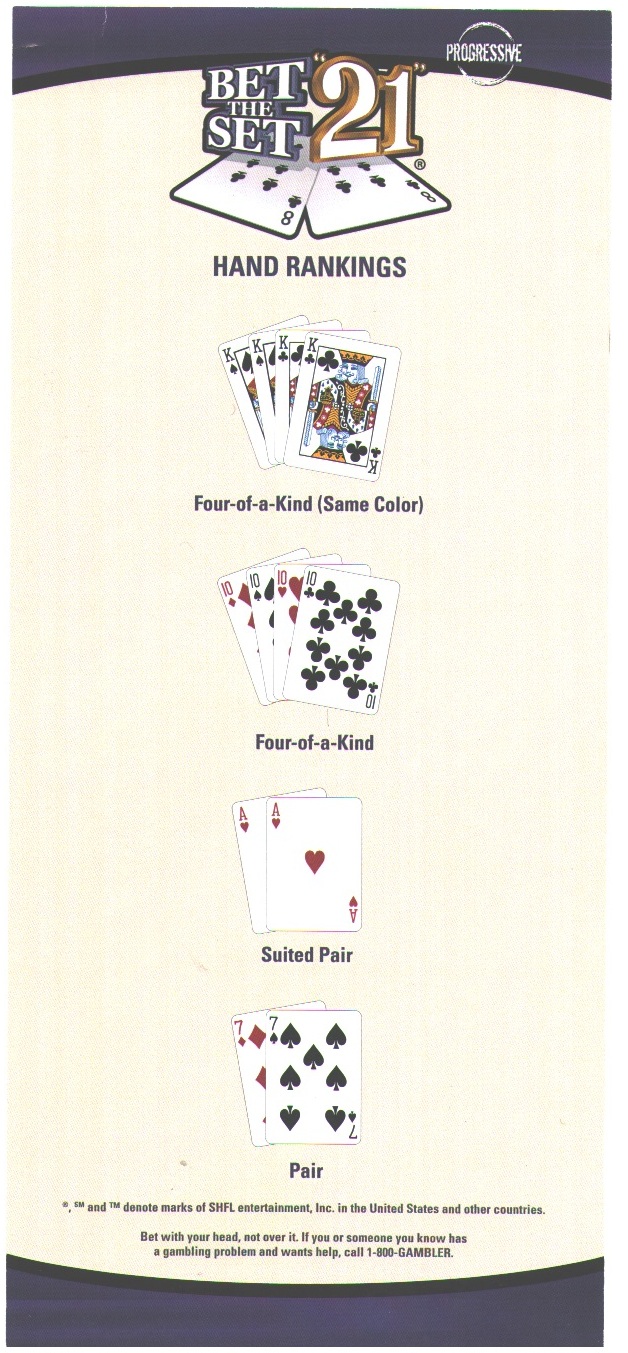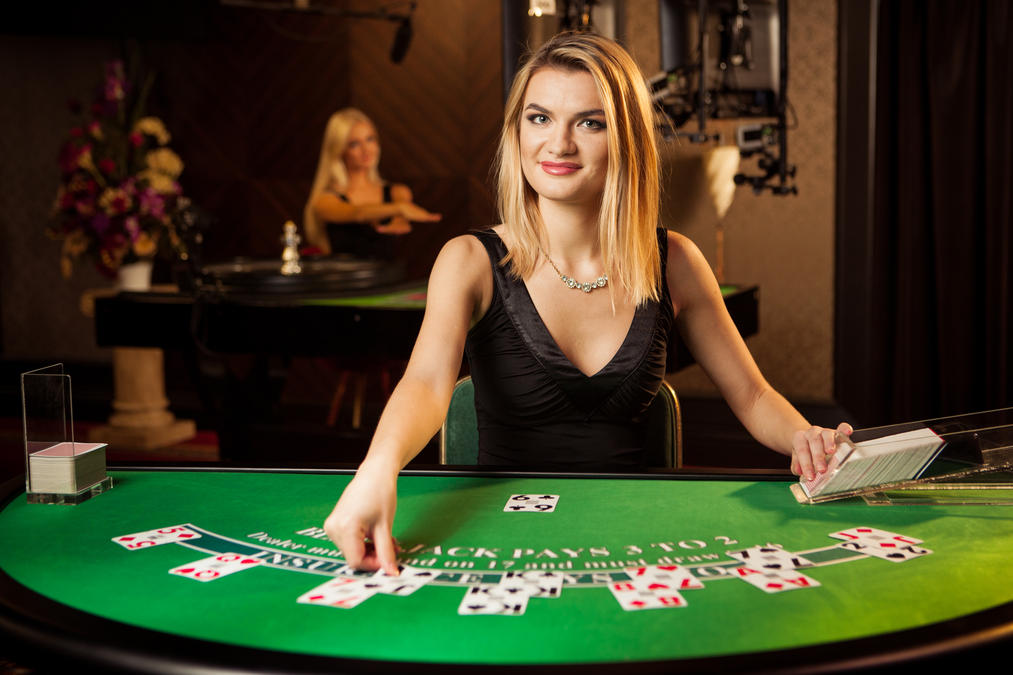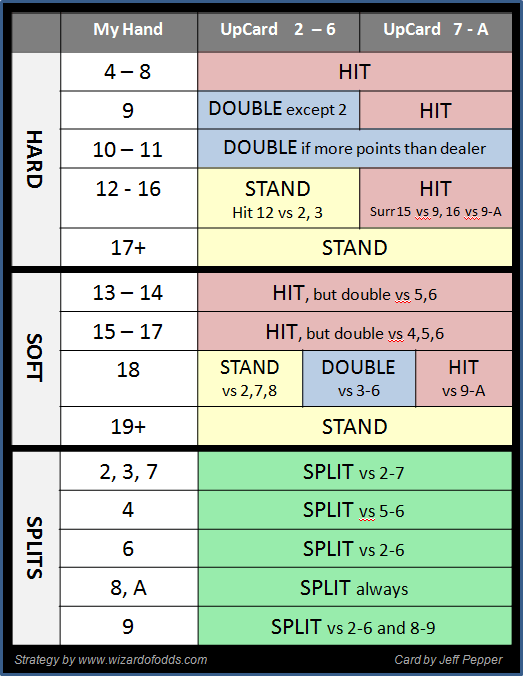If you’ve been playing blackjack for a while, you know when to hit and when to stand. But do you know when to split? Anytime you get dealt a pair, you have the option of splitting that pair into two separate hands. Many casinos also allow you to split mixed pairs, meaning any two cards with a value of 10. You’ll find many veteran blackjack players who won’t hesitate to split all these pairs, and they’ll tell you to do the same.
Don’t do it. There is a time to split your pair, and a time to keep your cards together. In addition to the dealer’s upcard, your decision to split or not depends on five factors:


1. How many decks of cards are in the shoe?
2. Does the dealer hit or stand on soft 17?
3. Are surrenders allowed?
4. Can you double down after splitting?
5. Does the dealer “peek” to see if he has blackjack?
Each variable requires you to tweak your splitting strategy if you want to play optimally. But if you already take blackjack seriously, you won’t find it too difficult to figure out. Start with these general rules that apply to every situation:
In blackjack, the standard rule is that if the player is dealt a pair of identically ranked initial cards, known as a pair, the player is allowed to split them into separate hands and ask for a new second card for each while placing a full initial bet identical to the original wager with each. Use the blackjack double down on any of the dealer’s card below seven except ACE. This rule only applies to when you have a hard 9, meaning you don’t have an ACE at hand. So, you can have a combination like 4-5, 3-6, or 2-7, but if you have an ACE-9 that’s a soft 9, and you shouldn’t use the. Blackjack double down on a soft-9.
Always Split Aces and Eights
If you get dealt two shiny Aces, you simply have to split those and go for two blackjacks. Then you should double down if your casino allows it. Many locations (including Ignition Casino) allow you to receive only one more card after you split your Aces; in this case, doubling the bet makes even more sense, and there are a lot of Tens through Kings to help you get there. Eights should be split so you don’t have 16 in your hand – you’ve got a good shot at getting at least one 18 out of the bargain instead.
Never Split Fives and Tens
Pairs of Tens and mixed pairs should never be split, because you’ve already got 20. And if you’ve got a pair of Fives, you’re holding 10, which is a solid starting point; again, you should double down with this hand, provided the dealer’s upcard isn’t also worth 10 or more. Just don’t split them first.
There’s one more hand that you can treat the same in virtually all forms of blackjack: a pair of Fours. Even some of the top players will recommend you never split Fours; if the dealer’s upcard is a Five or a Six, they’ll tell you to double down instead. But there are a few rare occasions where it makes sense to split those Fours. The game has to allow for doubling after splitting, and again, the dealer’s upcard has to be a Five or Six – or even another Four, if it’s Single Deck Blackjack. The more of these subtleties you can pick up, the more money you’ll make, so take the time to learn if you want to make the move from blackjack enthusiast to blackjack expert.
- Appendices
- Miscellaneous
- External Links
Blackjack Dealer Training
Introduction
Pair Play is a simple side bet by Pala Interactive that pays 11 to 1 if the player's first two cards form a pair. It is mathematically the same as the two pair bets in baccarat.
Analysis
Dealer Pair Blackjack Game
The following table shows the possible outcomes in a six-deck game, the number used in the Side Bet Blackjack game by Pala Interactive. The lower right cell shows a house edge of 11.25%
Pair Play — Six Decks
| Event | Pays | Combinations | Probability | Return |
|---|---|---|---|---|
| Win | 11 | 3,588 | 0.073955 | 0.813505 |
| Lose | -1 | 44,928 | 0.926045 | -0.926045 |
| Total | 48,516 | 1.000000 | -0.112540 |
The next table shows the house edge only for various numbers of decks.
Pair Play — House Edge

| Decks | House Edge |
|---|---|
| 1 | 29.41% |
| 2 | 18.45% |
| 3 | 14.84% |
| 4 | 13.04% |
| 5 | 11.97% |
| 6 | 11.25% |
| 8 | 10.36% |
 Written by: Michael Shackleford
Written by: Michael Shackleford